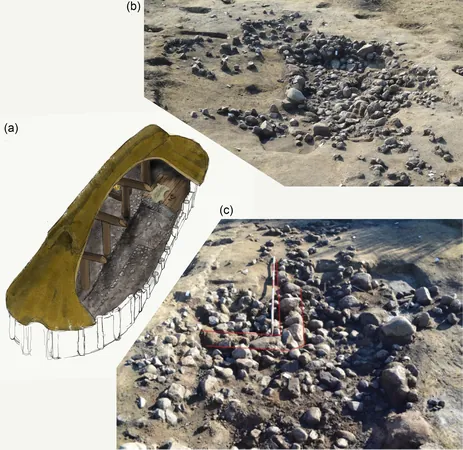
Breakthrough Study Reveals Higher Dosage of Radioembolization Can Double Survival Rates for Liver Cancer!
2024-10-10
Author: Yu
Breakthrough Study Reveals Higher Dosage of Radioembolization Can Double Survival Rates for Liver Cancer!
In a groundbreaking study executed by clinician-scientists from the National Cancer Centre Singapore (NCCS) and Singapore General Hospital (SGH), researchers have uncovered that administering a higher dosage of radioembolization treatment using yttrium-90 (Y-90) microspheres provides significantly better survival rates for liver cancer patients. The findings, which could revolutionize the treatment landscape, were detailed in the reputable journal *Liver Cancer* in September 2024.
Liver Cancer and Its Challenges
Liver cancer, particularly hepatocellular carcinoma (HCC), continues to be a leading cause of cancer-related deaths globally, ranking as the third most lethal form of cancer and the sixth most common. The prognosis for HCC is grim, with less than 20% of patients surviving beyond five years post-diagnosis. One major contributor to these poor outcomes is the commonality of late diagnoses and ineffective treatments for advanced stages of the disease.
HCC often presents with vascular invasion, where tumor cells infiltrate nearby blood vessels, making effective management increasingly complex. In cases with vascular invasion, radioembolization using Y-90 microspheres has been a crucial treatment approach since its adoption in the early 2000s. This minimally invasive therapy delivers potent doses of radiation directly to liver tumors via the bloodstream. However, the optimal dosage for ensuring the best clinical outcomes remained largely undefined until now.
Unlocking Optimal Dosage for Liver Cancer Treatment
This innovative study scrutinized the outcomes of 413 patients suffering from advanced HCC who underwent Y-90 therapy from January 2008 to May 2019 at SGH and NCCS, marking the largest single-institution study of unresectable HCC patients treated with Y-90 to date.
To determine effective treatment dosages, researchers categorized participants into two groups: one group receiving a dosage of at least 150 Gy and the other receiving less. The threshold of 150 Gy was derived from the mean dosage of the cohort, which stood at 154.7 +/- 80.4 Gy. Previous studies indicated that a dosage of at least 120 Gy should provide a measure of disease control.
Remarkably, patients receiving at least 150 Gy of Y-90 therapy exhibited overall survival rates nearly 15 months greater than those who were treated with lower dosages. Furthermore, 17%—equivalent to 70 patients—who experienced a reduction in tumor burden through Y-90 went on to benefit from curative treatments, including surgical interventions like liver transplantation or thermal ablation.
This transformative process, known as conversion therapy, significantly enhances survival prospects. Patients who transitioned to curative treatment post-Y-90 therapy enjoyed survival rates four times greater than those who did not pursue additional interventions.
A New Dawn for Liver Cancer Treatment
Dr. Chen Kaina, the study's first author and an Associate Consultant at SGH's Department of Gastroenterology & Hepatology, stressed the importance of sufficient radiation doses while preserving patient safety. “Now that we've established that higher doses can lead to better outcomes, this knowledge will be crucial for treatment planning and patient-doctor discussions,” she emphasized.
Professor Pierce Chow, the study’s senior author and Senior Consultant Surgeon at SGH and NCCS, highlighted the critical need for comprehensive research on liver cancer, particularly in regions with high prevalence rates like Asia. “Our goal is to advance our understanding of liver cancer and transform it from a fatal diagnosis to a treatable one,” he articulated.
As the research progresses, the team has initiated a multinational clinical trial combining Y-90 with immunotherapy, promising hope for a more effective approach in tackling liver cancer once and for all. Could this be the turning point in the battle against one of the deadliest cancers? Stay tuned for future updates!




 Brasil (PT)
Brasil (PT)
 Canada (EN)
Canada (EN)
 Chile (ES)
Chile (ES)
 España (ES)
España (ES)
 France (FR)
France (FR)
 Hong Kong (EN)
Hong Kong (EN)
 Italia (IT)
Italia (IT)
 日本 (JA)
日本 (JA)
 Magyarország (HU)
Magyarország (HU)
 Norge (NO)
Norge (NO)
 Polska (PL)
Polska (PL)
 Schweiz (DE)
Schweiz (DE)
 Singapore (EN)
Singapore (EN)
 Sverige (SV)
Sverige (SV)
 Suomi (FI)
Suomi (FI)
 Türkiye (TR)
Türkiye (TR)